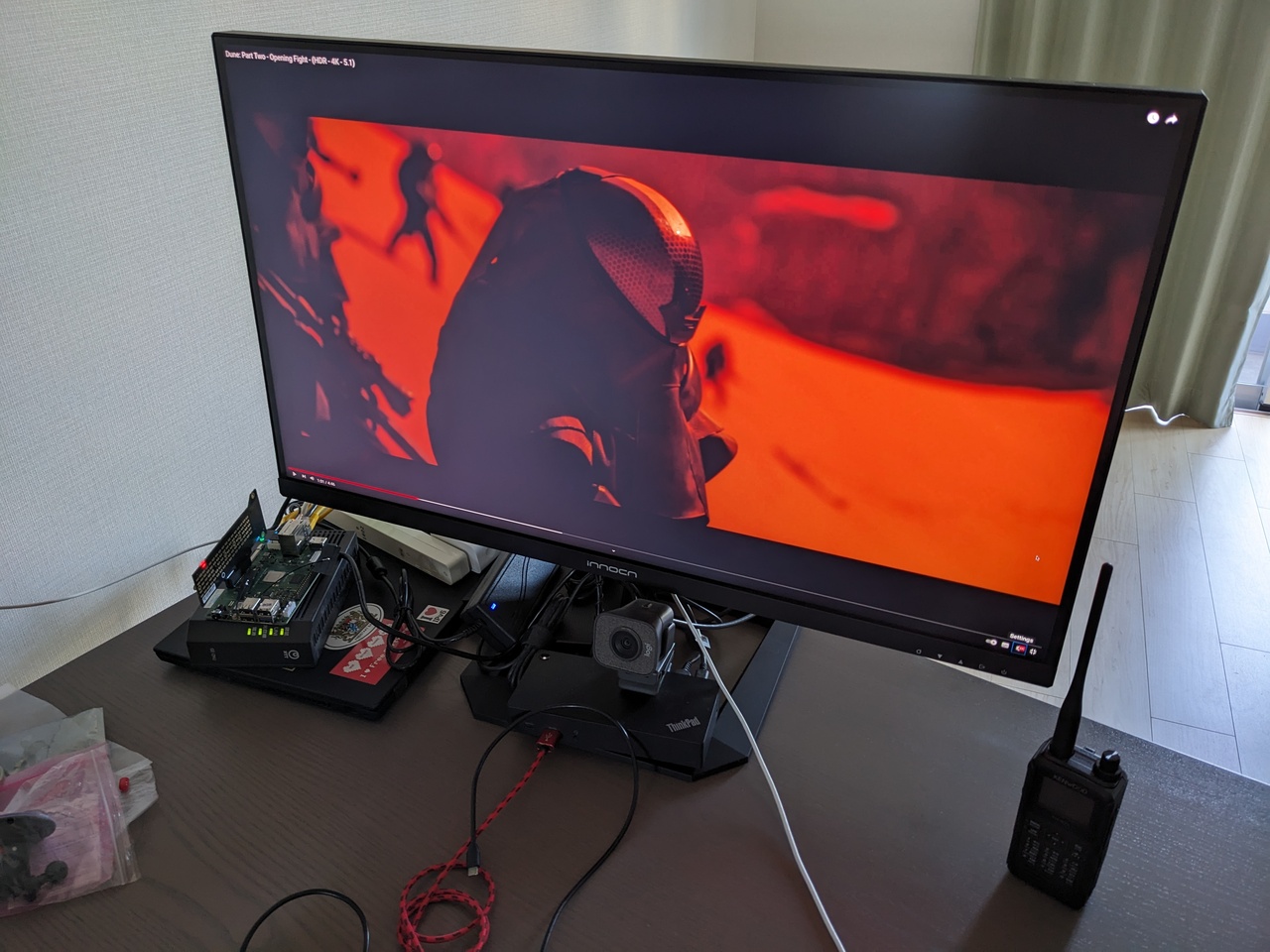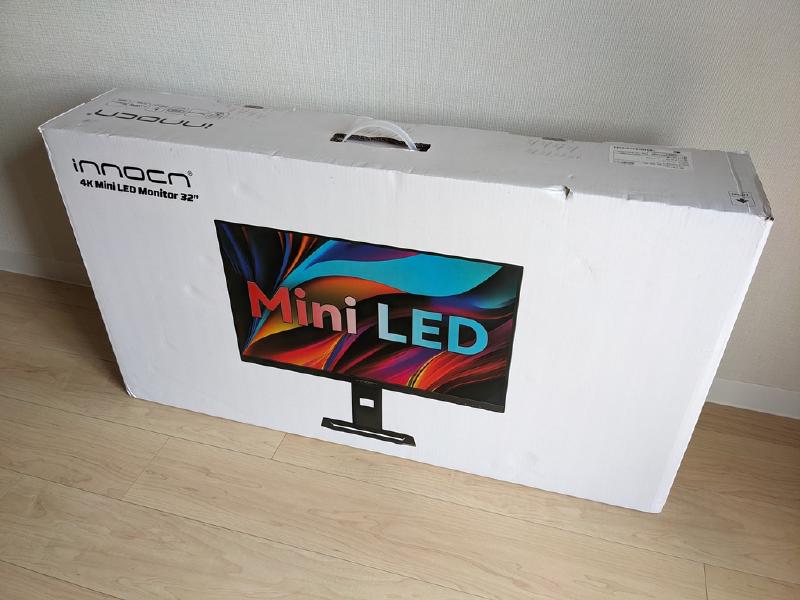Choosing a monitor is hard! When you buy shoes, you try them out.. but you just know for real after wearing them for some weeks. We might see monitors at stores, or try to get advice from others - but everybody has different use styles, so it’s hard to decide for a model.
What I use the monitor for:
- working with multiple terminals, but not more than 3 or 4 on one screen. I heavily switch between virtual screens.
- I use webbrowsers, when these are in Japanese, I often have to increase the font size
- more rarely: watching a movie or a drama, or playing
The previous monitor
In 2016, when I came to Japan, I got a 27" monitor at Bic Camera, one of the huge electronic stores in Tokyo. This was an I-O DATA LCD-MF276XDB, introduced 2014, with ADS panel. Maximum resolution 1920x1080, refresh rate 60Hz, builtin speakers. I use the monitor heavily, but was looking for something new. At work, I got a Lenovo one, liked the 2560x1440 resolution, and more vivid colours.
One thing was holding me back from getting a new monitor: I do not want to have 2 monitors around, this flat is small. In Japan, we have Hardoff stores to sell electronics, and online places like Mercari, but I did not feel to good about these options.
Getting the old monitor to good hands
This was quite a stunt! A friend living near Osaka was looking for a monitor and was willing to take it - but how to get it there, from Tokyo? Before we started to research shipping of such a rather big item, 2 friends from Germany moved into the picture. They were on a tour through Japan: Hokkaido, Hakodate, Tokyo, Osaka/Kyoto. They graciously accepted to take the monitor along with them to Osaka - creating a nice reason to meet up with the friend in Osaka, spend some time and also hand over the monitor.
Comparing models
I had walked around at Bic Camera some weeks ago. Their selection of business monitors is big, and they even opened up now extra spaces for gaming focused computers/monitors. But for taking time and comparing features, doing internet research seems more promising.
So I spent 3 evenings on researching options.. quite a rabbit hole! For a start, I read articles like this one, which say one should not start with resolutions lower than 4k, and 120Hz refresh rates.
Rather than specific models, I started to decide on the single features. I could then do a more specific search on amazon.co.jp to see which models are available.
Relevant features, and reasoning:
- Speakers: I need them builtin, as my desk is not big, and already fiber modem, own router (Star64), Thinkpad and their power supplies are stacked up
- Overall size: I tried to get again a 27" model again
- Resolution: Tricky. Wanted 2560x1440 at least, as from my experiences at the company I knew I could use it directly without scaling. Native 4k would be to small for me - all applications and browser fonts would be way to small by defailt. But I’m not buying a monitor every year, not getting a 4k these days would not make sense.
- Refresh rate: 60Hz is the default since the world switched from CRT’s to flat screen monitors. But nowadays, also 120Hz and 144Hz models are around: advertised for gaming. Some also say they are better for browsing.
With these, I came down to a selection of 5 monitors, looked at further
factors, and down to 2, and took the
INNOCN 32M2V:
4k resolution, 32" screen, up to 144Hz, 100,250円 (~625EUR).
Has HDMI2.1, DisplayPort1.4 and USB-C connectors, speaker buildin,
model released in April 2024, brightness sensor, HDR picture mode.
Heavier than others, slight downide: 10.7kg.
Driving the monitor
While I can use now more convenient modes than with the old monitor, I can not drive the monitor with all it offers.
See
for details.
For normal usage, I have settled with 2560x1440@120Hz for now. When I refresh my hardware in the future, I will reevaluate the modes.
Using the monitor
My first impression was not good, the light sensor was on and took the brightness down way to much: to 6% out of 100, increasing that helped. I’m running now with 20%, the monitor uses 32W then. Running 4k and activating HDR mode takes brightness to 60%, and the monitor consumes 42W then.
Seems like a quickstart document is available, but no full manual. Cheat sheet for monitor settings:
- professional settings
- DCI-P3 Mode: mode mostly used in digital photography
- C.T settings: Colour temperature
- picture settings
- DCR: Dynamic Contrast Ratio
- HDR: High Dynamic Range
- PIP/PBP mode: allows picture in picture; multiple sources to be shown at the same time
- other
- auto power: power on computer via usb-c after power loss?
- eyeshield remind: ?
- light sensor: adjust brightness to environment
- usb upgrade: used when upgrading monitor firmware via usb-storage
Was it worth the upgrade? Have the single points played out?
I’m happy with the upgrade, even though I can not use the highest modes the monitor offers right now. TODO: hook up the Macbook pro M2, with Asahi Linux and MacosX, see which modes are offered. Likely usb-c is again the bottle neck, so probably same modes will be available.
Questions? Comments? -> Mastodon thread

